第34章 MONEY OR SIMPLE CIRCULATION(15)
The determination of the prices of commodities presupposes that the value of the quantity of gold which serves as the standard measure,or the value of gold,is given.According to this assumption,the quantity of gold required for circulation is in the first place determined therefore by the sum of the commodity-prices to be realised.This sum,however,is in its turn determined by the following factors:1.the price level,the relative magnitude of the exchange-values of commodities in terms of gold,and 2.the quantity of commodities circulating at definite prices,that is the number of purchases and sales at given prices.[2]If a quarter of wheat costs 60s.,then twice as much gold is required to circulate it or to realise its price as would be required if it cost only 30s.Twice as much gold is needed to circulate 500quarters at 60s.as is needed to circulate 250quarters at 60s.Finally only half as much gold is needed to circulate 10quarters at 100s.as is needed to circulate 40quarters at 50s.It follows therefore that the quantity of gold required for the circulation of commodities can fall despite rising prices,if the mass of commodities in circulation decreases faster than the total sum of prices increases,and conversely the amount of means of circulation can increase while the mass of commodities in circulation decreases provided their aggregate prices rise to an even greater extent.Thus excellent investigations carried out in great detail by Englishmen have shown that in England,for instance,the amount of money in circulation grows during the early stages of a grain shortage,because the aggregate price of the smaller supply of grain is larger than was the aggregate price of the bigger supply of grain,and for some time the other commodities continue to circulate as before at their old prices.The amount of money in circulation decreases,however,at a later stage of the grain shortage,because along with the grain either fewer commodities are sold at their old prices,or the same amount of commodities is sold at lower prices.
But the quantity of money in circulation is,as we have seen,determined not only by the sum of commodity-prices to be realised,but also by the velocity with which money circulates,i.e.,the speed with which this realisation of prices is accomplished during a given period.If in one day one and the same sovereign makes ten purchases each consisting of a commodity worth one sovereign,so that it changes hands ten times,it transacts the same amount of business as ten sovereigns each of which makes only one circuit a day.[3]The velocity of circulation of gold can thus make up for its quantity:
in other words,the stock of gold in circulation is determined not only by gold functioning as an equivalent alongside commodities,but also by the function it fulfils in the movement of the metamorphoses of commodities.
But the velocity of currency can make up for its quantity only to a certain extent,for an endless number of separate purchases and sales take place simultaneously at any given moment.
If the aggregate prices of the commodities in circulation rise,but to a smaller extent than the velocity of currency increases,then the volume of money in circulation will decrease.If,on the contrary,the velocity of circulation decreases at a faster rate than the total price of the commodities in circulation,then the volume of money in circulation will grow.A general fall in prices accompanied by an increase in the quantity of the medium of circulation and a general rise in prices accompanied by a decrease in the quantity of the medium of circulation are among the best documented phenomena in the history of prices.But the causes occasioning a rise in the level of prices and at the same time an even larger rise in the velocity of currency,as also the converse development,lie outside the scope of an investigation into simple circulation.We may mention by way of illustration that in periods of expanding credit the velocity of currency increases faster than the prices of commodities,whereas in periods of contracting credit the velocity of currency declines faster than the prices of commodities.
It is a sign of the superficial and formal character of simple money circulation that the quantity of means of circulation is determined by factors --such as the amount of commodities in circulation,prices,increases or decreases of prices,the number of purchases and sales taking place simultaneously,and the velocity of currency --all of which are contingent on the metamorphosis proceeding in the world of commodities,which is in turn contingent on the general nature of the mode of production,the size of the population,the relation of town and countryside,the development of the means of transport,the more or less advanced division of labour,credit,etc.,in short on circumstances which lie outside the framework of simple money circulation and are merely mirrored in it.
If the velocity of circulation is given,then the quantity of the means of circulation is simply determined by the prices of commodities.Prices are thus high or low not because more or less money is in circulation,but there is more or less money in circulation because prices are high or low.This is one of the principal economic laws,and the detailed substantiation of it based on the history of prices is perhaps the only achievement of the post-Ricardian English economists.Empirical data show that,despite temporary fluctuations,and sometimes very intense fluctuations,[4]over longer periods the level of metallic currency or the volume of gold and silver in circulation in a particular country may remain on the whole stable,deviations from the average level amounting merely to small oscillations.